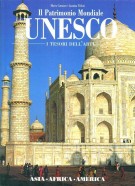Photo-fashion
| Author(s) | Wolfgang Hageney | ||
| Editor | Edizioni Belvedere | Place | Roma |
| Year | 1982 | Pages | 208 |
| Measure | 24x32 (cm) | Illustration | 12. ill. col., 18 ill b/n n.t. - co,or a nd b/w ills |
| Binding | bross. ill. a colori - paperback | Conservazione | Usato ottime condizioni - used very good |
| Language | Inglese - English text | Weight | 1200 (gr) |
| ISBN | 8870700135 | EAN-13 | 9788870700138 |
not available
(CAD books).
"Is fashion photography one of the harder drugs like alcohol? Is its power of suggestion stronger than tranquilizers? Do its images form our personality more than do education and knowledge? Is it even a variety of modern magic? Who are the magicians? And whither do they want to entice us? In no other field of photography is so much being produced and experimented today as in fashion photography.
It undoubtedly represents the spearhead, in qualitative terms, of the graphic and optical exploitation of light and shade, forms and colors. And at the same time the photographic avant-garde deliberately confronts us with the icons of a new sensibility, and teaches us the vocabulary of a pictorial language adequate to our times: fashion photography creates images. PHOTO-FASHION uses a series of photograms as a starting point. Through unconventional selection and technographic transformation, we gain extraordinary insights into the soft geometries of the wishes and yearnings of our time. We become aware of the algebra of a new sign language; we recognise the photograph as an universal means of communication, as a surrogate of unfathomable size.
These photo-images, with which we daily collide, and which condition and influence our taste, our expectations, and even our self-consciousness and our will, form part of an extensive grammar, which wants to give us access to a new visual sermon on the mount. An exorbitant mass in which never-ending litanies are celebrated with the greatest solemnity, idyllically sung with the plainsong of imagination and aesthetics, supported with behaviour patterns and expectation norms, consecrated with dream residues and inner longings, and anointed with the shimmer of hope and fragments of good luck. These are the building materials of a gigantic piece of psycho-architecture, whose monumental overall conception is only vaguely visible. We experience the images as psychosexual ornaments, as sculptures of desire, as figures of enigmatic daydreams. In the soft plains and hills, the gentle hollows and valleys of the human body, its gestures and gestications, its postures and positions -- the modules of our most elementary needs -- illusinary flying boats are easily anchored, and secret longings endlessly and spontaneously projected."
It undoubtedly represents the spearhead, in qualitative terms, of the graphic and optical exploitation of light and shade, forms and colors. And at the same time the photographic avant-garde deliberately confronts us with the icons of a new sensibility, and teaches us the vocabulary of a pictorial language adequate to our times: fashion photography creates images. PHOTO-FASHION uses a series of photograms as a starting point. Through unconventional selection and technographic transformation, we gain extraordinary insights into the soft geometries of the wishes and yearnings of our time. We become aware of the algebra of a new sign language; we recognise the photograph as an universal means of communication, as a surrogate of unfathomable size.
These photo-images, with which we daily collide, and which condition and influence our taste, our expectations, and even our self-consciousness and our will, form part of an extensive grammar, which wants to give us access to a new visual sermon on the mount. An exorbitant mass in which never-ending litanies are celebrated with the greatest solemnity, idyllically sung with the plainsong of imagination and aesthetics, supported with behaviour patterns and expectation norms, consecrated with dream residues and inner longings, and anointed with the shimmer of hope and fragments of good luck. These are the building materials of a gigantic piece of psycho-architecture, whose monumental overall conception is only vaguely visible. We experience the images as psychosexual ornaments, as sculptures of desire, as figures of enigmatic daydreams. In the soft plains and hills, the gentle hollows and valleys of the human body, its gestures and gestications, its postures and positions -- the modules of our most elementary needs -- illusinary flying boats are easily anchored, and secret longings endlessly and spontaneously projected."
Recommended books...





